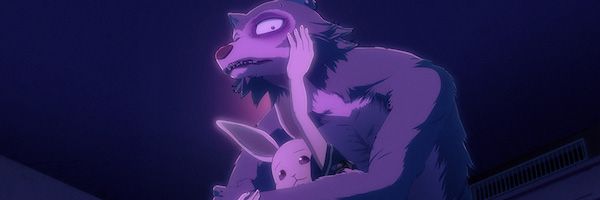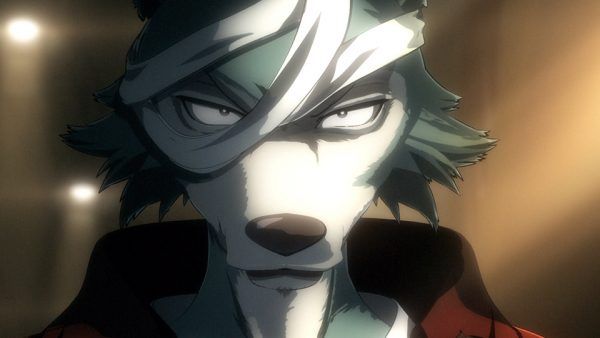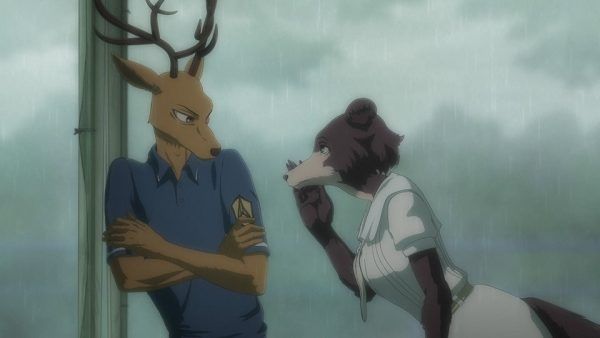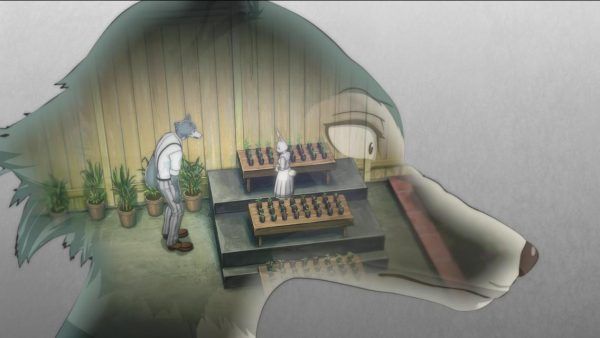The "Fight or Flight" response has long served animals of every species for millions of years. Beastars flips that evolutionary advantage on its head and asks what happens when predators resist their darkest impulses while prey move in for the kill. That's a fascinating conceit on its own, but factor in high school drama, a coming-of-age story, an exploration of various power dynamics in relationships, and a furry-forward approach to well-developed characters, and you've got one of the most original anime series of the year.
Netflix now delivers the English adaptation of the Japanese anime hit, originally adapted by CG-animation studio Orange for Fuji TV's +Ultra block from writer/illustrator Paru Itagaki's award-winning manga. Itagaki, daughter of acclaimed manga Keisuke Itagaki (Baki the Grappler), is as well known for Beastars as she is for donning a chicken mask to hide her face. Perhaps that particular quirk, and the popularity of characters in Beastars, will make that trend more acceptable among Western audiences. If BoJack Horseman primed people to accept the compelling stories of anthropomorphic animal characters, then Beastars doubles down with the message that animal people are just as horny as regular people are. Are you ready for that? If so, good; let's pile on.
Beastars can be appreciated from a number of perspectives: Its characters may look like Zootopia parallels on the surface, but this show is not for kids. It's got more in common with adult stories featuring anthropomorphic animal characters like Animal Farm, Watership Down, and The Plague Dogs. But Beastars also takes those characters and places them in real-world, high school, coming-of-age dramas befitting tales out of 13 Reasons Why or Rules of Attraction rather than a more aged-down, kid-friendly approach. It's Beauty and the Beast if Belle and all the other humans are animalistic as well, and if sex was treated as an actual act rather than a metaphorical one. So, in that regard, it's a bit like Twilight; the vampire connections continue further as Bela Lugosi gets an homage of sorts in the lead character's name.
The Beast, in this case, is Legoshi, a rather shy and sensitive gray wolf who spends time alongside carnivores and herbivores alike at Cherryton School's drama club. The Beauty is Haru, an all-white dwarf rabbit who tends to the gardening club all by herself and is ostracized from the school community because of her promiscuous nature. You can already see the subversion of the normal tropes here in these two characters: Legoshi struggles to come to terms with his innate, natural instincts as a carnivore and the conflicting feelings of love and sexual attraction to the diminutive rabbit. Haru, on the other hand, finds a connection to others through sex, an escape from her reality in which everyone around her literally looks down on her with pity for being such a small, fragile, and presumably helpless creature. These two are destined to come together in unexpected ways, but lots of things will complicate their relationship along the way.
There's Louis, the popular student, drama club lead, and contender for the honor of being named Beastar. As a red deer, the herbivore takes charge in unexpected ways, standing up to fellow carnivore students and even going toe-to-toe with a carnivorous criminal group who operate out of the city's Black Market. We learn quite a bit more about Louis' past throughout the season, but his relationship with Haru acts as a surface conflict to the Louis / Legoshi / Haru love triangle. Fellow gray wolf Juno complicates that even more once she arrives. But overshadowing all the drama, action, and romance in Beastars is the undercurrent of violence on campus and in the city itself; multiple instances of "devouring" has the herbivores running scared, the carnivores on the defensive, and the school and political leaders alike attempting to keep the peace. There's a sustained tension throughout the story as you don't know where or when the primitive violence is going to strike next. Unfortunately, the one place Beastars lets us down a little bit is in the unsolved mystery--the devouring of student Tem--that opens the season. There are hints as to the culprit, but no definite answers.
Elsewhere, Beastars excels on a more philosophical level. It's a story about nature vs nurture, instinct vs rational thought and control. A carnivore may desire to attack and devour an herbivore, but a rational member of a civilized society will find a way to resist and deflect that urge. An alpha male may yearn to attack rivals and conquer sexual objects of desire in a detached sort of way, but those striving to maintain humanity manage to control themselves and fight their natural instincts. That's the push-and-pull conflict that's at the center of Beastars, whether it's grounded in animal instincts or the power structure of a high school class system. And it's all handled with such maturity that sometimes you forget to laugh at the cheeky jokes about the well-known promiscuity of rabbits in the real world or the fact that there's an herbivorous panda brandishing a bamboo crossbow to take down carnivores who lose control.
Beastars is a refreshing change-up to more predictable and familiar anime series; it's also one of the year's best that will be hard to top from here on out. Season 2 is already a go in Japan--though it remains to be seen if / when it'll arrive on Netflix--but Season 1 left us with a few questions: What happened to Louis? Will Legoshi and others ever investigate the death of Tem? Just who was Legoshi talking to in the final episode, and what did that empty tray of medication have to do with the mysterious figure? Hopefully we'll find out later this year!
Rating: ★★★★ Very good




